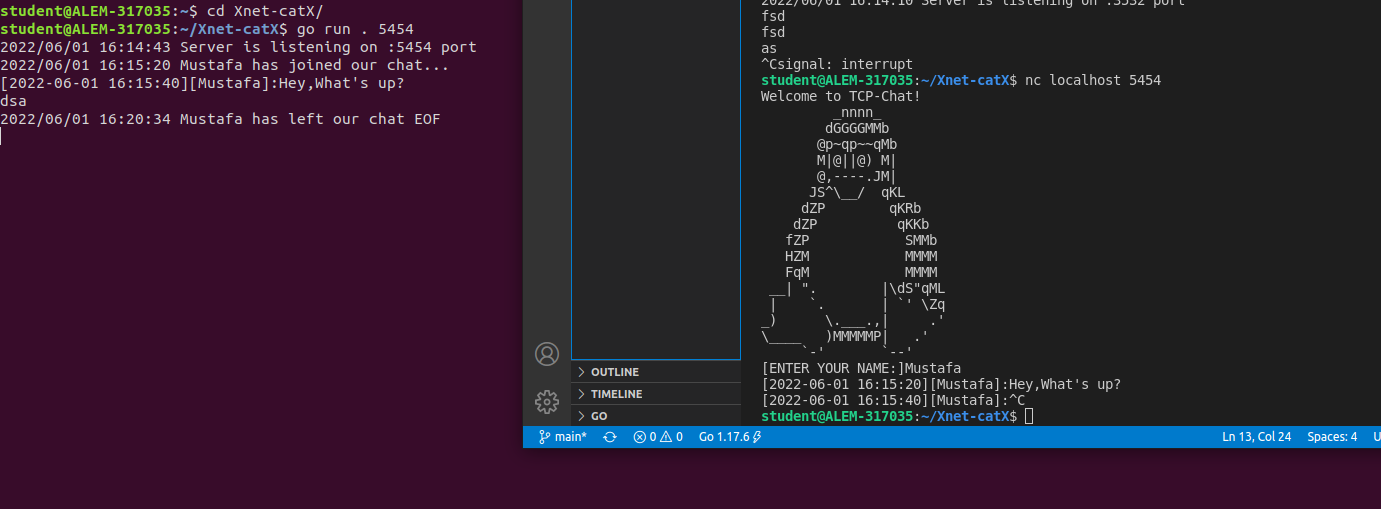- Run the go build TCPChat.go command in the root directory of the project
- Run the ./TCPChat $port
This project consists on recreating the NetCat in a Server-Client Architecture that can run in a server mode on a specified port listening for incoming connections, and it can be used in client mode, trying to connect to a specified port and transmitting information to the server.
- NetCat, nc system command, is a command-line utility that reads and writes data across network connections using TCP or UDP. It is used for anything involving TCP, UDP, or UNIX-domain sockets, it is able to open TCP connections, send UDP packages, listen on arbitrary TCP and UDP ports and many more.
Net-cat creates a group chatvia TCP. The project has the following features :
- TCP connection between server and multiple clients (relation of 1 to many).
- A name requirement to the client.
- Control connections quantity.
- Clients must be able to send messages to the chat.
- Do not broadcast EMPTY messages from a client.
- Messages sent, must be identified by the time that was sent and the user name of who sent the message, example : [2020-01-20 15:48:41][client.name]:[client.message]
- If a Client joins the chat, all the previous messages sent to the chat must be uploaded to the new Client.
- If a Client connects to the server, the rest of the * Clients must be informed by the server that the Client joined the group.
- If a Client exits the chat, the rest of the Clients must be informed by the server that the Client left.
- All Clients must receive the messages sent by other Clients.
- If a Client leaves the chat, the rest of the Clients must not disconnect.
- If there is no port specified, then set as default the port 8989. Otherwise, program must respond with usage message: [USAGE]: ./TCPChat $port
- Start TCP server, listen and accept connections
- The project has Go-routines
- The project has channels and Mutexes
- Accepts maximum 10 connections
- Only standard library was used
Server:
$ go run .
Listening on the port :8989
$ go run . 2525
Listening on the port :2525
$ go run . 2525 localhost
[USAGE]: ./TCPChat \$port
$
Client:
$ nc localhost 2525
